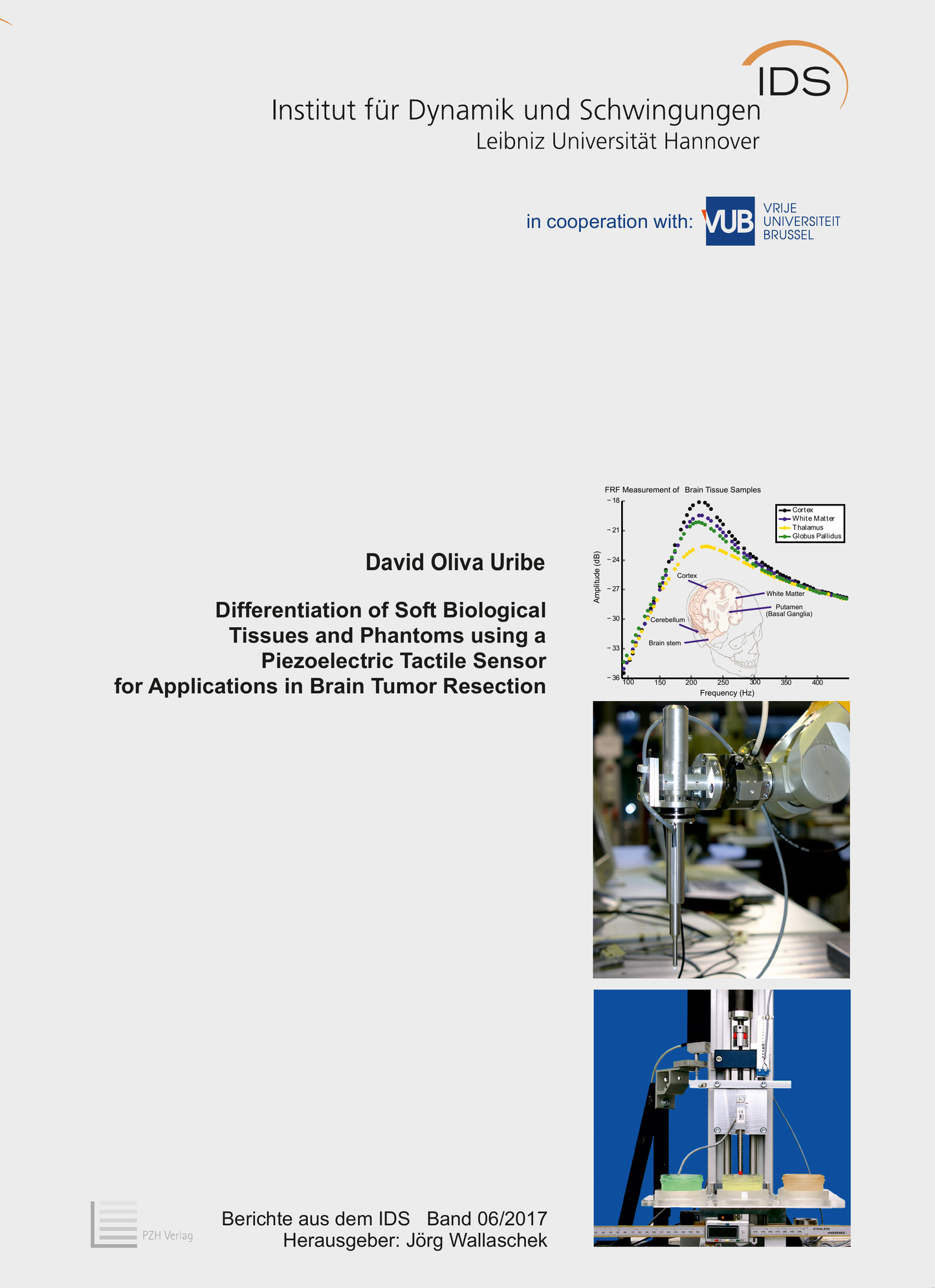Differentiation of Soft Biological Tissues and Phantoms using a Piezoelectric Tactile Sensor for Applications in Brain Tumor Resection
Autor: David Oliva Uribe
ISBN: 978-3-95900-151-9
Dissertation, Leibniz Universität Hannover, 2017
Herausgeber der Reihe: Jörg Wallaschek
Band-Nr.: IDS 06/2017
Umfang: 302 Seiten, 112 Abbildungen
Schlagworte: Taktiler Sensor, Piezoelektrischer Bimorph, Differenzierung von Weichteilgewebe, Multisinussignal, Tactile Sensor, Piezoelectric Bimorph
Kurzfassung:


